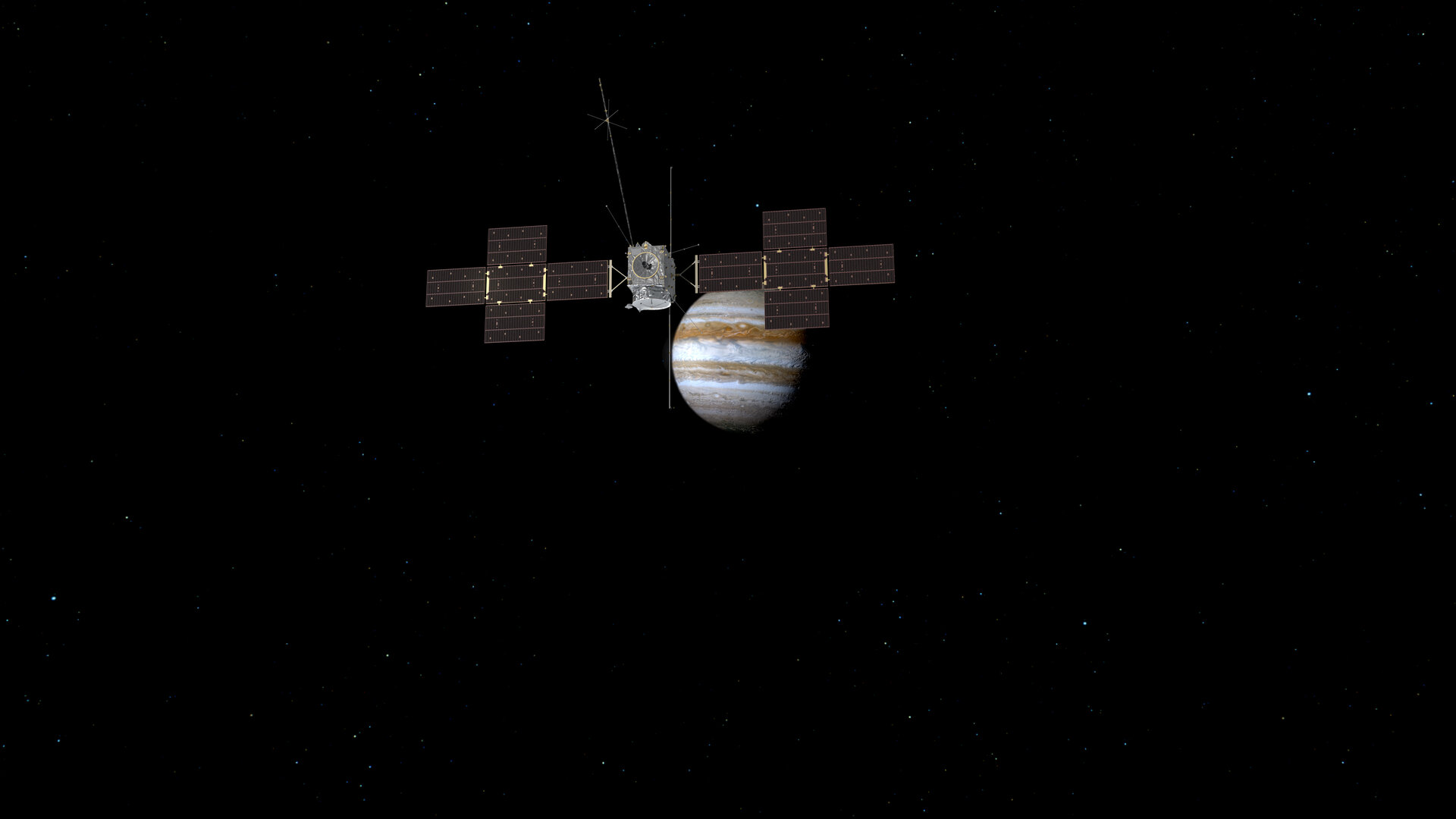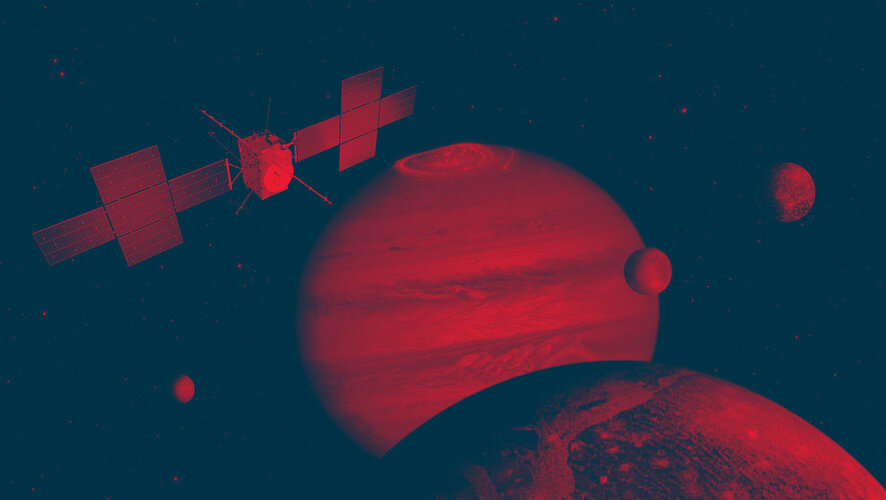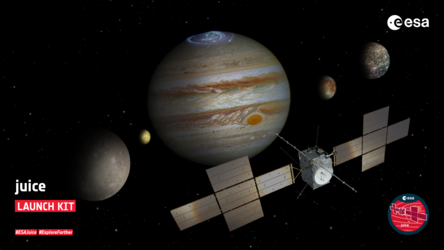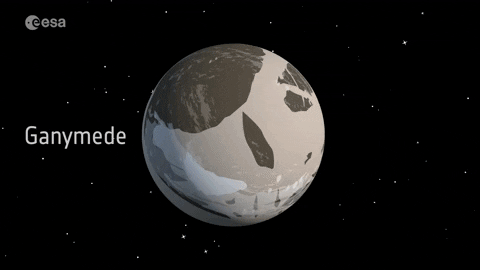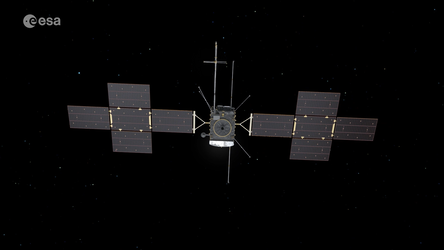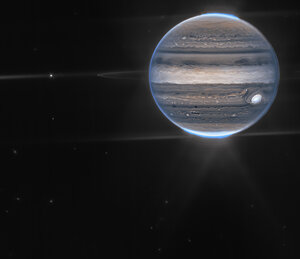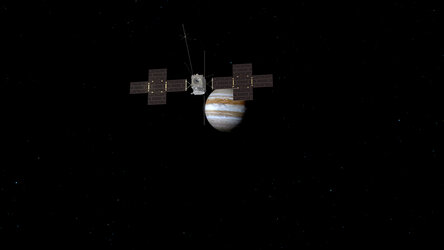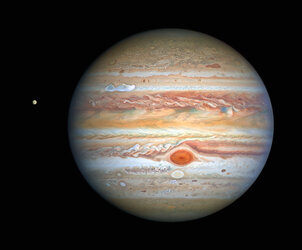A history of Jupiter exploration: the journey to Juice
ESA's Jupiter Icy Moons Explorer (Juice) is currently winging its way to Jupiter to explore the planet and its fascinating array of moons.
We have explored Jupiter for decades via both passing spacecraft (flybys) and spacecraft positioned in orbit around the planet. Our exploration began in the 1970s with NASA’s Pioneer programme, and continues today with NASA’s Juno and Europa Clipper missions and ESA’s Juice.
Past flybys
The first spacecraft to explore Jupiter were part of NASA’s Pioneer programme in the 1970s. Pioneers 10 and 11 visited the gas giant in 1973 and 1974, followed by NASA’s Voyager 1 and 2 probes in 1979. Later came flybys by the ESA/NASA Ulysses probe (1992), the NASA/ESA/ASI Cassini-Huygens mission (2000) and NASA’s New Horizons spacecraft (2007).
Overall, these flybys painted a picture of Jupiter as a world with intense magnetism, an extreme and changeable atmosphere, turbulent weather, complex dynamics and truly intriguing moons.
Alongside taking the first up-close images of Jupiter and its moons, Pioneer 10 measured the planet’s radiation belts, magnetic field, interior and atmosphere. Pioneer 11 built on this and looked more closely at Jupiter’s polar regions, Great Red Spot and moons. The Pioneers determined that Jupiter is largely liquid and gaseous, measured the mass of Jupiter’s moon Callisto, and characterised Jupiter’s intense space environment, paving the way for the forthcoming Voyagers.
The Voyagers also began their exploration of Jupiter by imaging the planet, finding its atmosphere to be more turbulent than expected. Voyager 1 discovered a ring system encircling Jupiter and encountered the moons Amalthea, Io, Europa, Ganymede and Callisto, imaging these worlds and their dynamic surfaces (including finding signs of active volcanism on Io for the first time). Voyager 2 sent back more images of the Jupiter system and its moons, focusing on Ganymede, Callisto, Europa and Io. This included: a 10-hour ‘volcano watch’ of Io, during which the probe confirmed the active volcanism seen by Voyager 1; an in-depth study of the fascinating scars seen on Europa, which Voyager 2 showed to be surprisingly shallow; and measurement of Ganymede, found to be the largest moon in the Solar System. Voyager 2 also explored Jupiter’s clouds, rings, Great Red Spot and atmosphere. The Voyagers discovered three new moons: Adrastea, Metis and Thebe.
The ESA/NASA solar probe Ulysses swung past Jupiter for a gravity assist in 1992, reaching higher latitudes than its predecessors. The spacecraft revealed many intricacies of Jupiter’s magnetic environment (magnetosphere) and studied the energetic particles in its vicinity, also passing near to the moon Io. Ulysses again imaged Jupiter in 2003/2004 from a distance.
The NASA/ESA/ASI Cassini-Huygens spacecraft performed a gravity assist at Jupiter in 2000, gathering many thousands of images of Jupiter’s atmosphere, moons, ring system and space environment. The mission discovered emissions from Io and Europa, spotted more signs of volcanism and plumes on Io, imaged the moon Himalia, characterised the particles in Jupiter’s rings, and probed Jupiter’s winds, storms, atmospheric layers and auroras.
The third spacecraft to complete a gravity assist at Jupiter was NASA’s New Horizons in 2006/2007, which observed Jupiter’s atmosphere, moons and magnetism. Over the course of four months New Horizons imaged Jupiter and Callisto, studied Jupiter’s atmosphere, clouds and weather (spotting violent storm waves and lightning strikes), and probed the gas giant’s ring system. New Horizons imaged the four largest moons of Jupiter with a focus on Io in particular, spotting never-before-seen volcanic eruptions extending upwards for hundreds of kilometres.
Past orbiters
NASA’s Galileo spacecraft was the first to orbit the gas giant (from 1995–2003), and the first dedicated craft to head to Jupiter. Galileo provided a wealth of information on Jupiter and its major moons and deployed a probe down into the planet’s atmosphere (a mission ‘first’).
Galileo found that Europa has a global ocean of liquid water beneath its icy surface, and suggested that Ganymede and Callisto may have subsurface water, too. The mission discovered that Ganymede creates its own magnetic field (the first moon known to do so); that Io’s volcanic activity may be 100 times greater than Earth’s; that Io’s dynamic atmosphere is coupled to Jupiter’s in complex ways; that Europa, Ganymede and Callisto have thin atmospheres; and that Jupiter’s rings contain material from the planet’s inner moons. Galileo’s probe measured the composition of Jupiter’s atmosphere, finding evidence that the planet has evolved significantly since it formed, and spotted signs of massive thunderstorms that dwarf anything seen on Earth.
Fortuitously, Galileo was cruising its way to Jupiter when the comet Shoemaker-Levy 9 crashed into the planet. The comet had been torn into pieces during its decade or so in the system; these fragments rained down on Jupiter in July 1994, an unprecedented event that was captured on camera by Galileo (as well as observatories such as Ulysses, Voyager 2, and the NASA/ESA Hubble Space Telescope).
Current missions (operational and in development)
Currently, there is one mission operating at Jupiter: NASA’s Juno orbiter.
Juno arrived at Jupiter in 2016 to explore how Jupiter formed and evolved, map the planet’s core and magnetic field, measure the composition of Jupiter’s atmosphere, and observe the planet’s striking auroras. The probe has completed dozens of close flybys of Jupiter since its arrival and performed the closest flyby of Ganymede since Galileo, also characterising Jupiter’s atmospheric and magnetic dynamics, discovering a new radiation belt, detecting lightning, cyclones, and surprising features in Jupiter’s auroras, measuring the planet’s water, mapping its internal structure and envelope of gas, and more. More on Juno's discoveries so far.
NASA’s tally of Jupiter missions will grow in 2030 with the arrival of its Europa Clipper, a mission that will perform numerous flybys of the moon Europa from orbit around Jupiter – one of the gas giant’s intriguing icy moons thought to contain a possibly habitable ocean beneath its surface.
The next steps: ESA’s Juice mission
Juno’s discoveries are helping to optimise plans for future exploration of Jupiter by ESA’s Juice spacecraft. When it arrives in 2031, Juice will build on the results of both Juno and Europa Clipper to significantly advance our understanding of the Jupiter system. While complementary, these three missions are each unique, with different objectives, orbits and instruments.
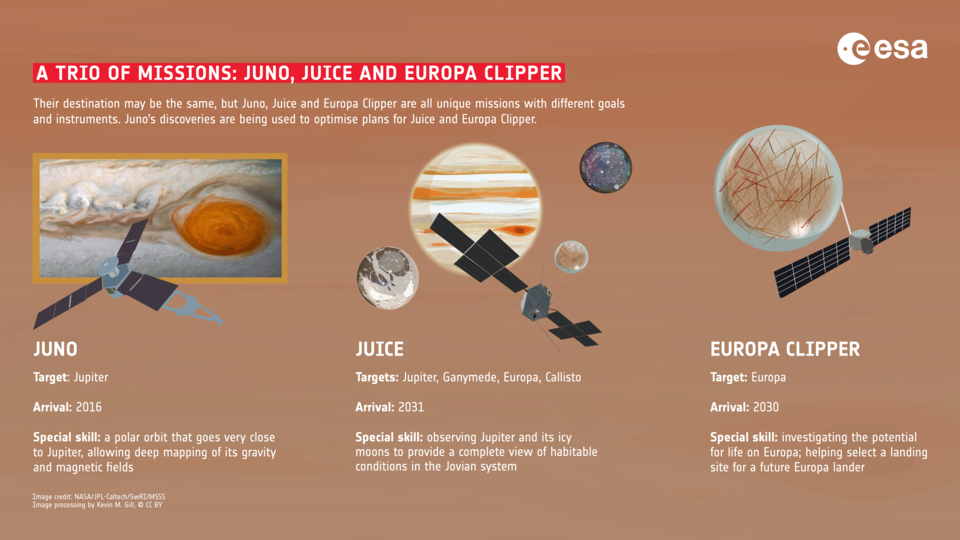
Juice will study Jupiter and its three large ocean-bearing moons – Ganymede, Callisto and Europa – with the most powerful payload ever flown to the outer Solar System. It will characterise these moons as both planetary objects and possible habitats, explore Jupiter’s complex environment in depth, and study the wider Jupiter system as a model for gas giants across the Universe.
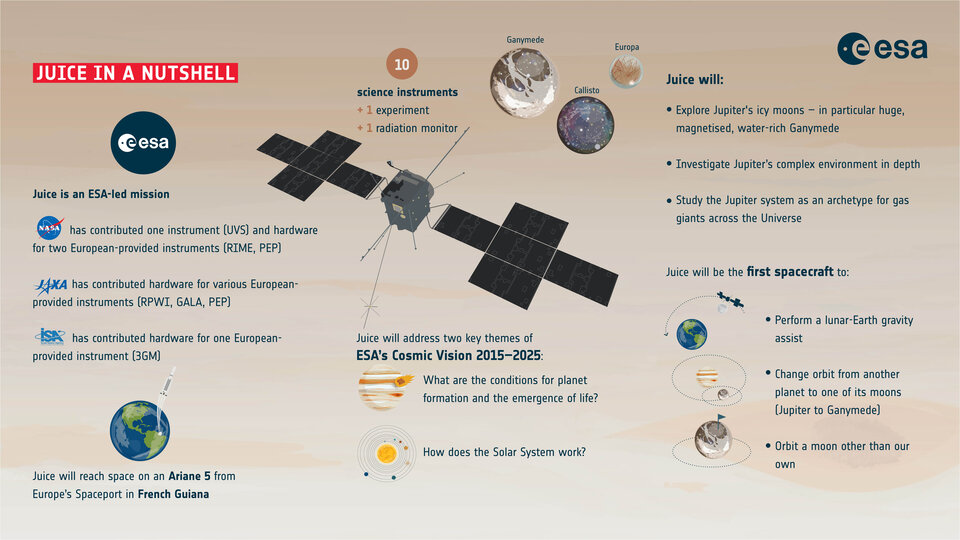
As several of Jupiter’s moons are known to host subsurface oceans, they may have once been amenable to life. With this in mind, Juice will dig into one of the most important questions known to humankind: Is the origin of life unique to our planet, or could it occur elsewhere in our Solar System – or beyond?
During its cruise to Jupiter, Juice will complete flybys of Venus, Earth and the Earth-Moon system (a Lunar-Earth gravity assist: a ‘first’). It will also be the first spacecraft to orbit a moon in the outer Solar System (Ganymede). As the largest moon in the Solar System, a moon containing a liquid ocean of water, and the only moon known to generate its own magnetic field, Ganymede will be Juice’s fascinating primary scientific target.
Juice builds on a legacy of scientific and technological heritage developed during previous missions to both other parts of the Solar System and to the Jupiter system itself. ESA missions such as Mars Express, Venus Express, Rosetta and BepiColombo have extensively explored the diverse environments found in our patch of space, paving the way for Juice to carry these capabilities to the outer Solar System.


